Victoria in the August woods. Part of 1
The first August operation - an offensive operation of the 10 Army (with the support of the 1 Army) of the Russian North-Western Front against the troops of the German 8 Army 12 - 30 September 1914. The main events of the operation took place in the city of Augustów - Suwalki (Suwalki Province, northeastern Poland) and in the Augustow Forest.
For the North-Western Front - this is so-called. operation with limited goals. The operational goal for the Russian troops is to improve tactical positions in the given theater of operations, as well as to pin down the enemy forces during the Warsaw-Ivangorod strategic operation.
The operational goal for the Germans is to keep a maximum of Russian troops on their front with vigorous, maneuverable actions. The German Guards Reserve, 11, 17, 20 Army Corps and 8 Cavalry Division from the 8 Army were deployed to Upper Silesia to participate in the attack on Warsaw. The Germans hoped that the defeats of the Russian 1 and 2 armies at Tannenberg and Instenburg would for some time provide East Prussia from the new Russian invasion.
The ratio of forces in the theater of operations: 1 (middle Neman region; 11 infantry divisions) and 10 (upper Neman - Grodno region; 8 infantry divisions) were opposed by the German 8 army (Gumbinnen region - Allen front and the German army) 7 Infantry Divisions). The German army was weakened by sending significant forces to Poland, but the Russian 1-th army performed an auxiliary task, besides its two corps (2-th and 4-th army) soon also left for Warsaw.
In addition, the Germans put up a consolidated detachment from the Vyvislinsky serf formations (later reorganized into the 2 th reserve corps) against the Russian 17 Army (recovering from the East Prussian operation).
The operation resulted in the actual “one on one” confrontation between the German 8 and Russian 10 armies. Considering the fact that the 2 corps of the latter (the 1 of the Turkestan and the 2 of the Caucasian Army) approached during the operation, the Germans at the first stage of the operation even had superior strength.
Accordingly, the actual balance of the forces of the opponents was as follows.
10 Army of the North-Western Front (Commander General of Infantry VE Flug) - 8 Infantry Divisions (22 Army, 3 Siberian Army, 1 Turkestan (consolidated); 2 Caucasian Army Corps) ; to 120 thousand people, around 400 guns.
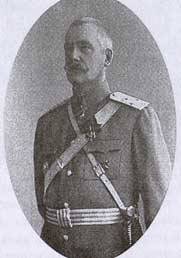
1. Commander of the 10th A NWF General of Infantry V.E. Flug.
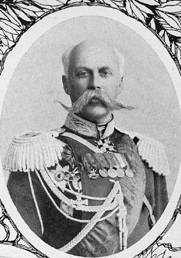
2. Commander of the 22nd Army Corps, Infantry General A.F. von der Brinken.
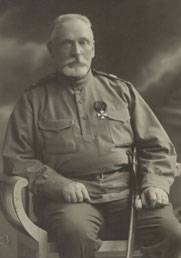
3. Commander of the 3rd SibAK Infantry General E. A. Radkevich.
The army also included the 1 Cavalry Division.
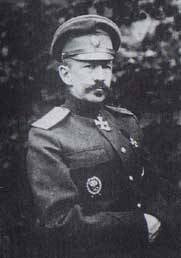
4. The commander of the 1 Cavalry Division, Lieutenant General V.I. Gurko.
The situation in the East Prussian theater of operations for the North-Western Front, after the failures of August, was tense. The mood of the troops was not always vigorous.
The German 8 Army (Commander General of Artillery R. von Schubert) included at the beginning of the operation: 5 primary line (infantry and reserve) divisions (1 Army and 1 Reserve Corps, staffed by natives of East Prussia, 3 Reserve Division), 2 Landwehr divisions (von der Goltz and Koenigsberg) and 3 Brigades (6-I, 9-I and 70-I Landver); 100 thousand people, 500 guns. The 1 Cavalry Division was also part of the army. The grouping was as follows: the 1-th reserve corps was located between Mariampol and Calvary, the 1-th army corps between Augustów and Suwalki; The 3-I reserve division and landwehr were located on the flanks of the operational force.
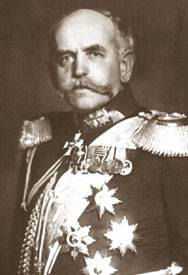
5. The commander of the German 8 A general artillery R. von Schubert. September 25 1914 was replaced by G. von Francois (with the appointment of the former commander of the corps commander).
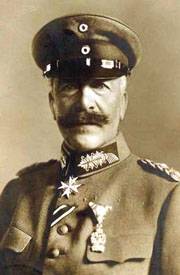
6. General of the infantry G. von Francois, commander of 8 A at the final stage of the First August Operation. Up to this point - the commander of the 1 AK.
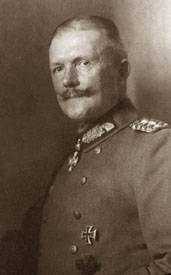
7. Commander 1 AK (actually from September 21, legally from September 25 1914) Lieutenant General A. von Falk.
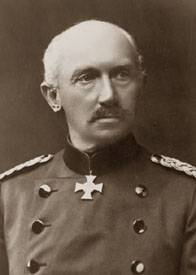
8. The commander of 1 RK, General of the infantry, O. von Belov.
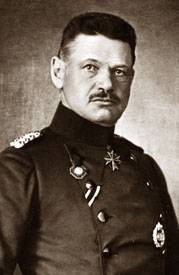
9. The chief of 3-rd rd lieutenant general K. von Morgen.
The operation includes three stages.
At the 1 stage of the operation, the enemy's landver units attacked the Sopotskin position, whose flanks covered Osovets and Druskiniki. The enemy attempted to seize the Osovets fortress. The officer of the 4 th Finnish Infantry Brigade, Colonel M. N. Arkhipov, wrote that the Germans had launched an offensive on the entire front of the 10 th Army, while simultaneously attacking Osovets. But the fortress, headed by N. A. Brzhozovsky, withstood a heavy artillery 4-day shelling: the advanced fortifications of the fortress were flattened, it was sweeping through — but it did not surrender. In the future, the fortress will withstand two more bombings and a gas assault, but it will stand - until the total withdrawal of the entire front in August 1915.
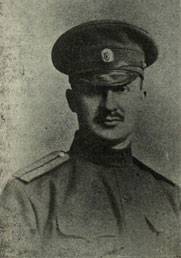
10. M.N. Arkhipov.
12 - September 13 The German 1 Army Corps attacked Druskiniki.
VE Flug strengthened the Osovets garrison and pulled up the 1 th Turkestan Corps to the fortress. As a result, enemy attacks were repulsed, and Osovets was rescued. The participants of the battles were especially impressed by the march-maneuver of the V.I. Gurko's 1 Cavalry Division to the August channel 14 of September — through the marshland and in the pouring rain.
The offensive of the enemy continued. But with each step of the German offensive on Russian territory, the enemy’s advantage in the field of railway communications was reduced. The few roads in the Suwalki province were unsuitable for the movement of German heavy artillery and trucks.
Russian troops were fierce defensive battles.
MN Arkhipov recalled how German artillery fired powerful fire near Raigorod, and then enemy rifle chains appeared. Through binoculars, the officer observed the movement of the German regiment, bypassing the right flank of the 4 brigade of the Finns. But then the 26 th Siberian rifle regiment arrived from the reserve, led by the command and combat colonel of the General Staff Ya. K. Tsikhovich.
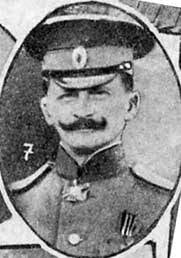
10. but. Ya. K. Tsikhovich.
The enemy's artillery fire was very strong - heavy “suitcases” broke the pines like matches, but the shooters beat back the enemy’s persistent attacks with accurate fire. Russian artillery supported the infantry, and even the heavy battery of 48-linear howitzers was turned on. After a series of stubborn attacks, the Germans were exhausted, leaving in front of the forest thick chains of dead men who went on the attack with closed bayonets. Residents der. Lazare, who cleared the corpses, said to the shooters: “Well, have you killed the Germans!” Having suffered huge losses, the enemy left the Russians at d.d. Kosila-Lazare is a large field hospital with wounded and personnel, including 3 doctors. The Russian arrows steadfastly withstood the pressure of the enemy and conducted accurate fire - despite the considerable losses from the continuous strong fire of German artillery.
11. Attack of the Russian infantry. East Prussia, autumn 1914. The great war in the images and paintings. Issue 6. M., 1915.
VE Flug decided to throw the Germans away from Druskenik with a flank blow - he deployed the 2-th Caucasian Corps between the 22-Corps and the r. Neman.
The front command posed a passive task for the 10 Army. Commenting on it, V.E. Flug noted that he received an order to stop active actions - take the 22 body to Augustovo, and the 3 Siberian - to Osovets. The army should go on the defensive on the Narev-Beaver line, covering the Lomza-Bialystok railway, without engaging in serious battles with the enemy - until all the corps were concentrated. As the commander pointed out, in this order, which condemned his operational unification to passive defense on the 150-km front, the anxiety caused by the preceding failures for the fate of the army, which was supposed to save from possible problems, was ignored. The mood of the command of the North-Western Front untied the hands of the Germans, and the order repeated the error made earlier by the 10 Army P.H. P. Rennenkampf during the Tannenberg battle for the 1 Army. After all, there is nothing worse than inaction.
VE Ye was not going to put up with this. He planned: to forge the Germans with a frontal strike of the 22 and 2 of the Caucasian corps, which attacked the enemy on Sopotskin-Koptsievo - from south to north along the river. Neman, having intercepted the retreat of the Germans 1-m Turkestan and 3-m Siberian corps, striking Augustus-Lyk.
The commander wrote to the front command that it was not worthwhile to act "Manchurian." Even if the "Samson disaster" and made such a strong impression that we want to avoid the slightest risk - but then without the risk there is no victory. VE Flug, making parallels, noted that the Germans took this mood into account, and after failing with the 2 Army, they become as daring as the Japanese in 1905. Now the Germans, the general wrote, seem to us omnipotent and omnipresent But this is the way to demoralize the troops. The general reported that he advocated the need for decisive action, and could not be indifferent to see his army gradually being entangled with wire barriers, reinforced with machine guns and tools - this would deprive the troops of maneuverability, and then have to break through the fortified positions of the enemy at the cost of tens of thousands of lives. Every day the situation is getting worse, and it will soon be impossible to penetrate beyond the edge of the Avgustov forests, strengthened by the Germans - VE Flug considered.
And on September 15, the 10 Army began its offensive.
The army command prepared for it in a short time — crossings across the August Channel were organized, for enemy disinformation distracting blows were carried out, 75% of the army forces were engaged for active tasks.
The task of the 10 Army Corps on the 15 September was formulated as follows: the 2-th Caucasian Army and the 22-th Army Corps to attack on the Copcievo-Giba front, the 3-th Siberian Army Corps - on Augustów.
The 2-th Caucasian Army and 22-th Army Corps advanced between the Neman and the August forest; the team of the 22 corps (from Lipsk) and the 3 Siberian corps (from Shtabina) moved to Augustów; The 1 th Turkestan contributed to the Osovtsu, the 3 th Siberian and the 22 th corps.
Solving the assigned tasks, the 15 of September, the Caucasian Grenadier Division, moved to Koptsievo, and the fighters of the 8th Siberian Rifle Division began the battle for Bialobrzhegi.
VE Flug, having started the battles in the Avgustov forests, made a roundabout maneuver using two corps (the 3 of the Siberian corps captured the city of Augustov and went to the rear of the enemy). 7-I Siberian Rifle Division attacked Augustus from the west, and 8-I Siberian Rifle Division - from the south. In 14 hours 30 minutes 15 September, the city was taken. The Germans began to retreat to Suwalki and Druskini.
The Stavka Summary reported on energetic battles for the northern exits from the Avgustov forests, about the capture, after stubborn battles, of the German positions at Copciev and Augustow — the enemy was driven back to Suwalki - Seinam - Mariampol.
The advancing formations of the 10 Army advanced to the points Rachki - Suwalki - Giba - Sejny. The 2-th Caucasian Army and 22-th Army Corps bypassed the August forests, while the cavalry moved through the forest, keeping in touch with the right flank of the army with the center - the 3-m Siberian Army Corps. The task of the cavalry at this stage of the operation (and subsequently) was particularly responsible - they not only maintained contact and conducted reconnaissance, but also defended the flanks of the combined-arms units. So, in the battle, Kuryanka had moments when the regiments of the 8 Siberian Rifle Division were bypassed from both flanks, but the resilience of the Siberian riflemen and selfless help from the cavalry of V.I. Gurko helped with the honor to get out of the situation. In the end, moving over the river. Shcheberka and having beaten off the subsequent attacks of the enemy, the vanguard fulfilled its task of securing the left flank of the 3 of the Siberian corps.
The enemy pulled the 1 Army Reserve Corps, the 1 Reserve Corps, and Landweavers with strong artillery to the rescue. In 7 hours 15 minutes 18 September, the head of the August detachment, the commander of the 2 th Turkestan rifle brigade, Major-General I. V. Kolpikov launched an offensive on the line новarnovo - oz. Nelsk. 2-th Caucasian Army Corps moved to the Krasnopol area - oz. In games.
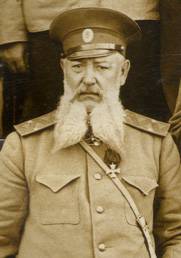
12. The commander of the 2 th Turkestan Rifle Brigade, Major-General I. V. Kolpikov.
The commander of the 10 Army ordered, moving north from Graev, to strike the flank and rear of the German troops operating from Markgrabov to Augustow.
13. First August operation. The course of the fighting 12. - 20. 09. 1914 d. Short strategic outline of the 1914-1918 war. Russian front. CH 2. M., 1919.
18-19 September in August forests were heavy oncoming battles, complicated by the specifics of the terrain. Their peculiarity consisted in the fact that in the forest battle the Germans lost their advantage in heavy artillery - and Finnish, Caucasian and Siberian units defeated the enemy. The fighting developed very dynamically, Russian troops carried out vigorous marches, including night marches. Summary of the Stavka celebrated hard fight under Suwalki. The reinforcements deployed by the Germans launched an offensive on the Suwalki-Augustow front. During the night bayonet attack at Rachka, the Germans suffered heavy casualties by the dead and prisoners.
Colonel B. N. Sergeevsky recalled these battles as a “puff cake” in which the Russian and German units acted out of communication with their neighbors and with the command. And the Russians won. They suffered the most severe losses in the western sector of the battlefield (Siberians), and the Germans in the eastern part of the region (where they opposed the Finns). The losses from German rifle fire, as B. N. Sergeevsky noted, were very large.
Of great importance was the commander's initiative. B. N. Sergeevsky, recalling the battles of the 2 of the Finnish rifle brigade, noted that when all the officers (except A.A. Reiman) were out of action, and more than half of the private soldiers, the lieutenant, being only 600 steps away from enemy chains on completely open ground, ordered the “attack” and rushed forward with the remaining 90 fighters. And from that moment until the capture of the enemy’s position, in which he was captured over 200 Germans, the lieutenant of the 5 Finnish Regiment A. A. Reiman did not lose a single soldier: the German infantrymen who were in chains then jumped up adjoining the bayonets, they again lay down and opened fire - which for some reason went over the heads of the attacking Finns. When the Finns were in the 200 steps from the Germans, the latter were mostly standing, throwing their weapons and raising their hands up.
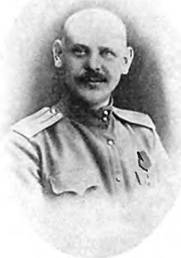
13. but. A. A. Reiman.
And the 10 th Finnish Rifle Regiment, being in a column, suddenly came across an enemy. The commander of the regiment ordered to turn around in a chain, but the brigade commander, Lieutenant-General S. F. Stelnitsky, shouting "Which chain is behind me," personally led the soldiers to the attack. On the battlefield, there were 500 dead Germans and only 16 fallen shooters of the 10 regiment.
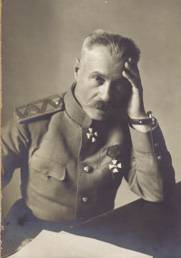
13. b. S. F. Stelnitsky.
Unexpected collisions, mutual rounds and coverage led to large losses. So, the Finnish shooter, recalling the unheard of stubborn fight, when no one wanted to give up, recalled how the battalion of the 12 regiment, moving along with the machine-gun crew on the highway to Suwalki, discovered a large infantry unit of the Germans. Camouflaged machine guns were installed on the sides of the Augustow-Suwalki highway, and the German convoy was allowed on a direct shot. The kosopotselny fire 8 machine guns for a minute destroyed the German column. The impression of the terrible spectacle of a column of corpses of several hundred people lying on the highway was so great that the chief of the machine-gun crew went insane - was tied up and sent to the rear.
Russian units skillfully maneuvered in the forest. So, on September 19, the 3 of the Finnish Infantry Brigade turned to the aid of the 4 Brigade in order to hit the Germans in the rear. Opponent left der. Gavrikhrud and occupied the railroad. After careful reconnaissance, the 3-I and 4-I brigades attacked the Germans, quickly rushing through the clearing. During the night, the enemy left the forest, and the 3 Brigade, contacting the artillery and securing the support of its howitzers, went to the edge of the forest, overturned the enemy, seized the 3 guns, and secured the forest behind them.
AA Kersnovsky, describing the September battles in the August forests, noted the fact of the baptism of the "young Finnish regiments". Caucasian grenadiers shocked by the Tannenberg winners nicknamed the "yellow devils." And, as the East Prussian grenadier wrote (later lost), “in these damned forests” the Russians showed us “their wolf teeth”.
To be continued
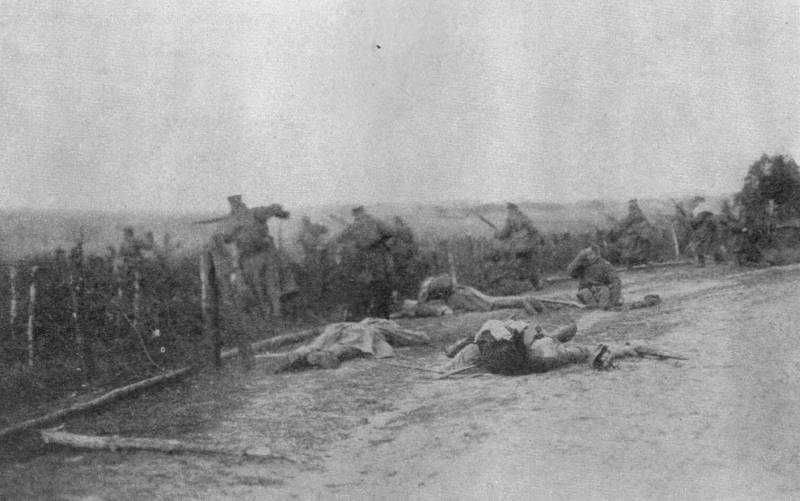
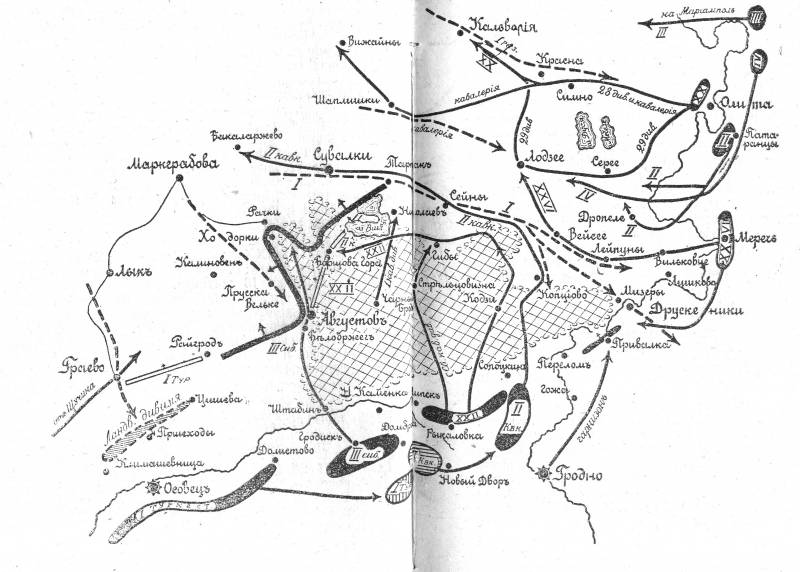
Information